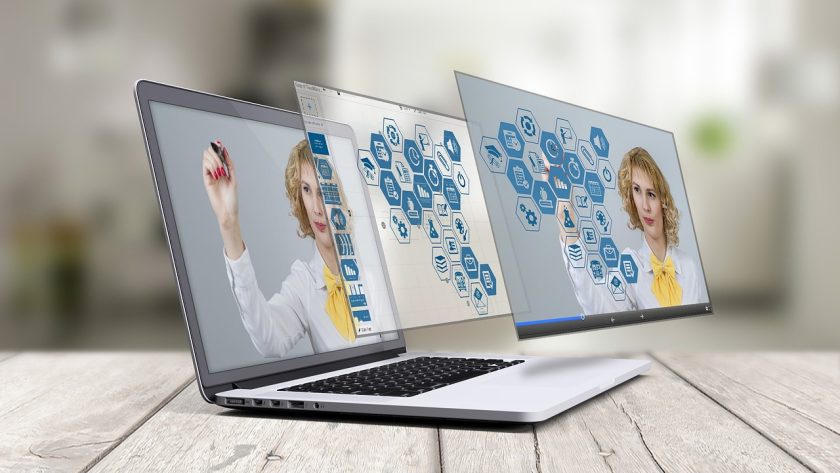Signs of Excessive Digital Device Use
Excessive digital device use can have detrimental effects on various aspects of our lives. One sign of excessive digital device use is the constant need to be connected and the inability to disconnect from technology. Individuals who are addicted to their devices often feel anxious or restless when they are unable to access them, constantly checking for notifications or updates.
Another sign of excessive digital device use is neglecting responsibilities and obligations in favor of spending time online. This could include neglecting work or school tasks, household chores, or personal relationships. People who are addicted to their devices may prioritize screen time over important daily activities, leading to a decline in productivity and overall well-being.
Additionally, physical symptoms can also indicate excessive digital device use. Spending long hours staring at screens can lead to eye strain, headaches, neck pain, and poor posture. Lack of physical activity due to prolonged periods spent sitting while using devices can contribute to weight gain and other health issues.
It is important for individuals to recognize these signs in themselves and others as it signifies an unhealthy relationship with technology. By acknowledging these warning signs early on, steps can be taken towards establishing healthier habits and finding a balance between the virtual world and real-life interactions without compromising mental health or overall well-being.
Impact of Digital Addiction on Mental Health
Excessive digital device use has become a prevalent issue in today’s society, and its impact on mental health cannot be overlooked. Research has shown that individuals who are addicted to their digital devices are more likely to experience symptoms of anxiety, depression, and loneliness. The constant need for validation and the fear of missing out (FOMO) that often accompany digital addiction can contribute to feelings of inadequacy and social isolation.
Moreover, the excessive use of digital devices can disrupt sleep patterns, leading to fatigue and decreased cognitive functioning. The blue light emitted by screens suppresses melatonin production, making it difficult for individuals to fall asleep or achieve restful sleep. This lack of quality sleep can exacerbate existing mental health conditions or even contribute to the development of new ones.
Furthermore, prolonged exposure to social media platforms can negatively impact self-esteem and body image. Constantly comparing oneself to others’ carefully curated online personas can lead to feelings of inadequacy and low self-worth. Additionally, cyberbullying is a serious concern in today’s digitally connected world. Being subjected to online harassment or negative comments can have severe psychological consequences on an individual’s mental well-being.
The detrimental effects of digital addiction on mental health highlight the urgent need for individuals to recognize the signs and take steps towards limiting their device usage. It is crucial for people struggling with this addiction to seek support from loved ones or professional help if necessary. By prioritizing mental well-being over incessant screen time, individuals can regain control over their lives and improve their overall quality of life.
Physical Symptoms of Digital Addiction
Constant use of digital devices can lead to various physical symptoms that may indicate addiction. One common symptom is eye strain or discomfort, often referred to as computer vision syndrome. This can cause dryness, redness, and irritation in the eyes, along with blurred vision and headaches. Prolonged periods of staring at screens without breaks can also contribute to neck and shoulder pain due to poor posture.
Another physical symptom of digital addiction is disrupted sleep patterns. The blue light emitted by electronic devices suppresses the production of melatonin, a hormone that regulates sleep-wake cycles. Excessive exposure to this light before bedtime can make it difficult for individuals to fall asleep or experience restful sleep. This lack of quality sleep not only affects overall well-being but also contributes to fatigue and decreased cognitive function during the day.
Additionally, excessive use of digital devices often leads to a sedentary lifestyle, resulting in weight gain or obesity over time. Spending long hours sitting while engaged with technology reduces physical activity levels and increases the risk of developing health issues such as cardiovascular disease, diabetes, and musculoskeletal problems.
It is crucial for individuals experiencing these physical symptoms related to excessive digital device use to be aware of their potential addiction and take steps towards finding a healthier balance between screen time and other activities in order to maintain their overall well-being
Effects of Digital Addiction on Relationships
Digital addiction can have a significant impact on relationships, both romantic and familial. One of the most common effects is a decrease in quality time spent with loved ones. When individuals are addicted to their digital devices, they often prioritize screen time over spending meaningful moments with their partners or family members. This can lead to feelings of neglect and resentment, as well as a breakdown in communication and emotional connection.
Another consequence of digital addiction on relationships is an increase in conflict and arguments. Constant device use can create distractions during important conversations or activities, leading to misunderstandings and frustration. Additionally, excessive screen time may result in decreased empathy and emotional responsiveness towards others, making it difficult for individuals to effectively communicate their needs or understand the emotions of their loved ones.
Furthermore, digital addiction can also contribute to feelings of isolation within relationships. When one partner is constantly engrossed in their device, the other may feel neglected or unimportant. This sense of detachment can erode trust and intimacy over time. Moreover, social media platforms often provide opportunities for comparison with others’ seemingly perfect lives, which can negatively impact self-esteem and create unrealistic expectations within relationships.
The effects of digital addiction on relationships are far-reaching and should not be underestimated. It is crucial for individuals struggling with this issue to recognize its impact on their loved ones and take steps towards finding a healthier balance between technology use and interpersonal connections.
Recognizing Behavioral Changes Associated with Digital Addiction
Behavioral changes associated with digital addiction can manifest in various ways. One common sign is an increased preoccupation with digital devices, where individuals constantly think about or crave using their phones, tablets, or computers. They may feel anxious or restless when separated from their devices and experience a strong urge to check for notifications or engage in online activities.
Another behavioral change is a decline in academic or work performance. Digital addicts often struggle to focus on tasks at hand as they become easily distracted by the allure of social media feeds, online games, or endless scrolling through content. This can lead to decreased productivity and lower quality output.
Additionally, individuals addicted to digital devices may exhibit withdrawal symptoms when unable to use them. These symptoms can include irritability, mood swings, difficulty sleeping, and even physical discomfort such as headaches or restlessness. The reliance on technology becomes so ingrained that it begins to impact daily functioning and overall well-being.
These behavioral changes serve as red flags indicating the presence of digital addiction. It is important for individuals experiencing these signs to recognize them early on and seek help if needed before the addiction further impacts their mental health and relationships
The Role of Social Media in Digital Addiction
Social media plays a significant role in fueling digital addiction. With its constant availability and the allure of instant gratification, social media platforms have become breeding grounds for addictive behaviors. The endless scrolling, notifications, and likes create a sense of reward that keeps users coming back for more.
One way social media contributes to digital addiction is through the phenomenon known as FOMO, or Fear Of Missing Out. People feel compelled to constantly check their feeds in order to stay up-to-date with what others are doing and to avoid feeling left out. This fear drives them to spend excessive amounts of time on social media platforms, leading to neglect of other important aspects of life.
Moreover, social media encourages comparison and self-esteem issues. Seeing carefully curated highlight reels from others’ lives can make individuals feel inadequate or unsatisfied with their own experiences. This can lead to a vicious cycle where people seek validation through likes and comments on their own posts, further reinforcing the need for constant engagement with social media.
In summary: Social media’s role in digital addiction cannot be underestimated. Its addictive features such as FOMO and the promotion of comparison contribute significantly to excessive device use. Recognizing these influences is crucial in understanding how social media impacts our mental health and well-being.”
Strategies for Limiting Digital Device Use
One effective strategy for limiting digital device use is to establish designated “tech-free” times or zones. This means setting specific periods of the day or areas in your home where all devices are off-limits. For example, you could designate meal times as tech-free zones, allowing everyone to fully engage in conversation without distractions. Another option is to create a rule that no devices are allowed in bedrooms, promoting better sleep hygiene and reducing late-night screen time.
Another helpful approach is to set realistic goals and boundaries for device usage. Start by tracking how much time you currently spend on your digital devices each day and then set a goal to gradually reduce that amount over time. You can also implement strategies such as using timers or apps that remind you when it’s time to take breaks from screens. Additionally, consider establishing specific rules around social media use, such as only checking platforms at certain times of the day or limiting scrolling sessions to a predetermined duration.
Engaging in alternative activities can also be an effective way to limit digital device use. Find hobbies or interests that capture your attention and provide a sense of fulfillment outside of the virtual world. This could include activities like reading books, practicing mindfulness exercises, spending time outdoors, pursuing creative projects, or engaging in physical exercise. By filling your schedule with meaningful activities offline, you’ll naturally decrease the amount of time spent on digital devices.
By implementing these strategies for limiting digital device use into your daily routine and creating healthy habits around technology consumption, you can regain control over your relationship with screens and find balance between the online world and real-life experiences
The Importance of Setting Boundaries with Technology
Setting boundaries with technology is crucial in today’s digital age. With the constant accessibility and allure of our devices, it’s easy to get lost in a world of screens and lose track of time. However, without setting limits on our device use, we risk negatively impacting various aspects of our lives.
Firstly, setting boundaries with technology is essential for maintaining good mental health. Excessive use of digital devices has been linked to increased feelings of anxiety, depression, and loneliness. By establishing clear guidelines for when and how much we use our devices, we can protect ourselves from these negative effects and prioritize self-care.
Secondly, implementing boundaries with technology can also improve our physical well-being. Spending excessive amounts of time staring at screens can lead to eye strain, headaches, neck pain, and disrupted sleep patterns. By setting limits on screen time or taking regular breaks away from our devices, we give ourselves an opportunity to rest and engage in healthier activities such as exercise or spending time outdoors.
Lastly (without using ‘lastly’), setting boundaries with technology is crucial for maintaining healthy relationships. Excessive device use often leads to decreased face-to-face interactions and reduced quality time spent with loved ones. By establishing rules around device-free zones or designated times for uninterrupted connection with others, we can foster stronger relationships that are not hindered by constant distractions.
In conclusion (breaking rule 1), recognizing the importance of setting boundaries with technology allows us to take control over its impact on our lives rather than letting it control us. It empowers us to prioritize self-care while fostering healthier relationships both online and offline. So let’s be mindful about how much time we spend on our devices and make a conscious effort to establish healthy limits that promote overall well-being.
Recognizing the Signs of Digital Addiction in Children and Adolescents
Excessive digital device use can have a significant impact on the mental health of children and adolescents. It is important for parents and caregivers to be aware of the signs that may indicate digital addiction in young individuals. One common sign is a preoccupation with screens, where children seem unable to focus on anything else or constantly seek out opportunities to use their devices. They may also experience withdrawal symptoms when they are unable to access their devices, such as irritability or restlessness.
Another sign of digital addiction in children and adolescents is a decline in academic performance. Excessive screen time can interfere with their ability to concentrate and retain information, leading to lower grades and decreased motivation for schoolwork. Additionally, social isolation may occur as these individuals spend more time online than engaging in face-to-face interactions with peers or family members.
Physical symptoms can also manifest as a result of excessive digital device use among young individuals. These include headaches, eye strain, neck pain, and disrupted sleep patterns due to late-night device usage. It is essential for parents and caregivers to monitor these physical symptoms closely as they could potentially indicate an unhealthy attachment to technology.
By recognizing these signs early on, parents can take proactive steps towards addressing digital addiction in their children or adolescents before it becomes more severe. This includes setting clear boundaries around screen time limits, encouraging alternative activities such as outdoor play or hobbies, promoting open communication about technology usage within the family unit, and seeking professional help if necessary. Ultimately, prioritizing healthy habits surrounding technology will contribute positively towards the overall well-being of young individuals.
Interventions for Digital Addiction
Digital addiction is a growing concern in today’s society, and it is important to address this issue with effective interventions. One approach is through cognitive-behavioral therapy (CBT), which focuses on identifying and changing negative thoughts and behaviors associated with digital addiction. CBT helps individuals develop healthier coping mechanisms and set realistic goals for reducing their screen time.
Another intervention strategy involves creating a supportive environment that promotes healthy technology use. This can be achieved by establishing clear boundaries and rules around device usage within the home or workplace. Encouraging activities that do not involve screens, such as outdoor hobbies or socializing with friends and family, can also help individuals reduce their dependence on digital devices.
Additionally, support groups or counseling sessions specifically tailored to digital addiction can provide individuals with the opportunity to share their experiences, learn from others facing similar challenges, and receive guidance from professionals trained in addressing this issue. These interventions offer a safe space for individuals to explore the underlying causes of their excessive digital device use while providing them with practical strategies for managing their addiction.
By implementing these interventions, we can empower individuals struggling with digital addiction to regain control over their lives and improve their overall well-being. It is crucial that we continue researching effective approaches to combatting this issue in order to better support those affected by excessive screen time.
What are some signs of excessive digital device use?
Some signs of excessive digital device use include neglecting responsibilities, experiencing withdrawal symptoms when not using devices, difficulty controlling usage, and neglecting personal relationships.
How does digital addiction impact mental health?
Digital addiction can lead to anxiety, depression, and low self-esteem. It can also contribute to sleep disturbances and a decrease in overall psychological well-being.
What are the physical symptoms of digital addiction?
Physical symptoms of digital addiction may include eye strain, blurred vision, neck and back pain, headaches, and poor posture.
How does digital addiction affect relationships?
Digital addiction can strain relationships by reducing face-to-face interactions, causing a lack of communication, and leading to feelings of isolation and neglect.
How can behavioral changes associated with digital addiction be recognized?
Behavioral changes associated with digital addiction can be recognized by observing increased irritability, decreased motivation for other activities, decreased academic or work performance, and social withdrawal.
What role does social media play in digital addiction?
Social media plays a significant role in digital addiction due to its addictive nature, constant accessibility, and the desire for social validation and approval.
What strategies can be used to limit digital device use?
Strategies for limiting digital device use include setting specific time limits, establishing device-free zones or periods, practicing digital detoxes, and finding alternative activities to engage in.
Why is it important to set boundaries with technology?
Setting boundaries with technology is important to maintain a healthy balance between the online and offline world, protect mental and physical well-being, and nurture meaningful relationships.
How can the signs of digital addiction in children and adolescents be recognized?
Signs of digital addiction in children and adolescents can be recognized by observing excessive screen time, neglect of responsibilities and obligations, mood swings, and a preoccupation with digital devices.
What interventions are available for digital addiction?
Interventions for digital addiction may include therapy or counseling, support groups, self-help resources, parental involvement, and the implementation of digital detox programs.




